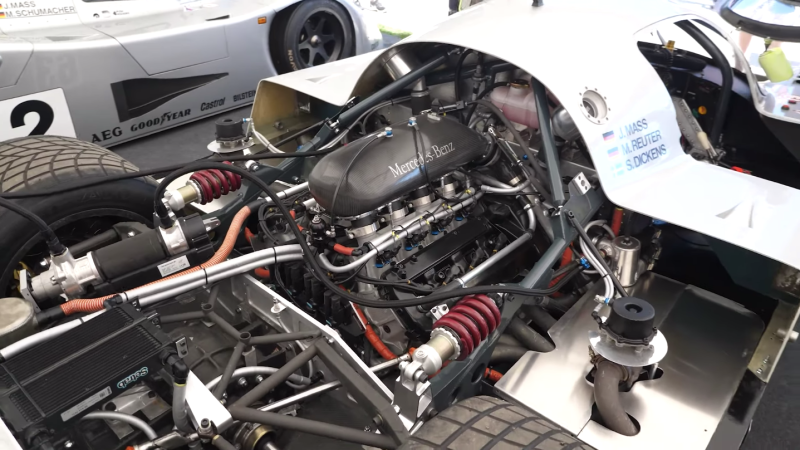
The Mercedes-powered Sauber C9 is a legend in endurance racing, taking the 1989 24 Hours of Le Mans overall win and sounding like the Earth being torn apart by two wolverines. These Group C cars still run vintage events today, but they don’t do it exclusively on 1989 tech.
High Performance Academy turned out this interview with a team operating and maintaining one of the ‘89 chassis, running up the hill at Goodwood this year.
What’s new on the vehicle is interesting. The old ECU is gone, but the new one is carefully hidden inside a housing made to look just like the vintage one. It allows the team to look at things that Mercedes might never have thought to. The team watches clutch pedal travel, for instance, just to keep an eye on drivers and be sure they’re not riding the clutch on a genuinely historic car, even though this isn’t the particular vehicle that took the overall win. The current roster of drivers are not exactly Schumachers, or perhaps just should be trusted to be.

But it’s also neat what’s not used. New ECU tech would allow for careful safety cuts if the engine starts knocking. Modern turbo builds really want this stuff, as it’s easy to find tuners hunting max power from max boost on small displacement engines. Not a big issue here. This is a 5.0-liter V8. It is a very large air pump, and to get its big 800 horsepower and 700-odd lb-ft of torque, it only needs 0.9 bar, or 13 PSI. It’s not low boost, exactly, but it’s low enough that the team doesn’t even need to worry about detonation at high boost pressures. A Subaru or a boosted Honda this is not.
Advertisement

The turbos themselves are also tricksters. Modern guts hide in vintage housings. The look is there, as is the spirit, it’s just that the car is now less likely to blow up.
Advertisement
And that’s good, because this is a extremely finely-machined (and historic, and expensive) engine block that even runs water through the intake manifold for cooling.
While there is a lot of neat new stuff in this car, the heart of it is still the very peak of what could be done in the late 1980s. The presence of the car (and the sound) is still there. That’s what counts.













